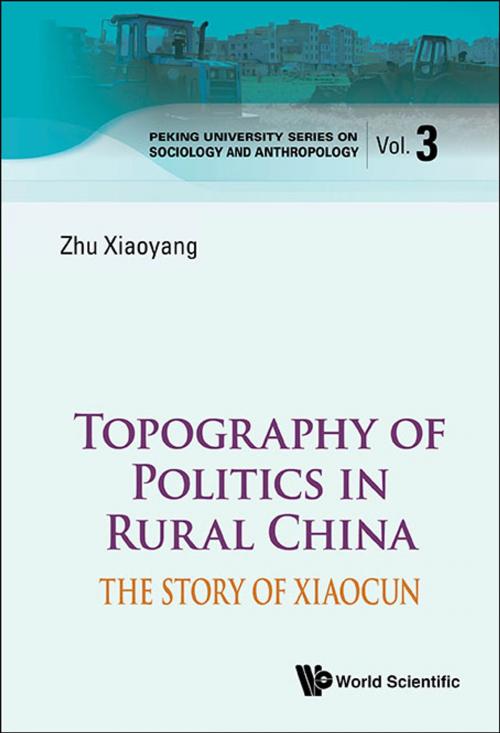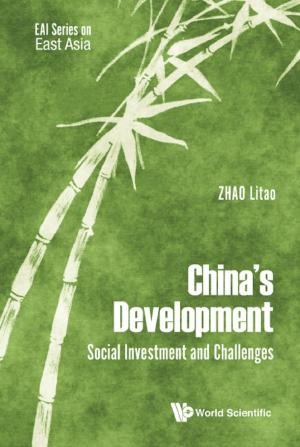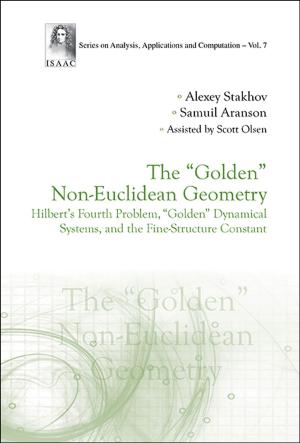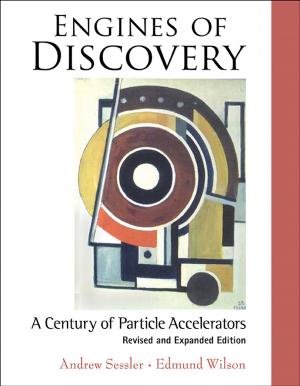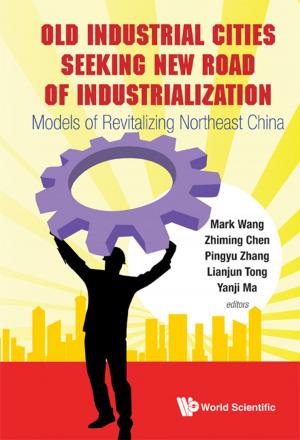Topography of Politics in Rural China
The Story of Xiaocun
Nonfiction, Social & Cultural Studies, Social Science, Sociology, Urban, Political Science, Business & Finance| Author: | Xiaoyang Zhu | ISBN: | 9789814522724 |
| Publisher: | World Scientific Publishing Company | Publication: | September 12, 2014 |
| Imprint: | WSPC | Language: | English |
| Author: | Xiaoyang Zhu |
| ISBN: | 9789814522724 |
| Publisher: | World Scientific Publishing Company |
| Publication: | September 12, 2014 |
| Imprint: | WSPC |
| Language: | English |
Contemporary Chinese rural life is placed in sharp theoretical and practical focus in this book. State-of-the-art techniques and perspectives are combined to take the reader into Xiaocun, a small village on the east bank of the Dianchi Lake in Kunming City.
In 2003, the author published the book Crime and Punishment: The Story of Xiaocun (1931–1997), which dealt with disputes, mediation and punishment in the village following the legal anthropology tradition. At that time, neither the villagers nor the author foresaw the vast changes that were to appear a few years later. Their main economic activity then was growing vegetables and flowers; urbanisation was tsunami-like in its speed and impact. Land requisition for urban development was so swift that five years later, in 2008, there was no farmland left. Instead, there were many landmark real estate and development projects. Xiaocun has become the centre of an enlarged Kunming City. Observers, including the Xiaocun residents, are unavoidably shocked at the changes to the physical landscape in the wake of its rapid urbanisation.
This book, Topography of Politics in Rural China: The Story of Xiaocun, reports the author's revisits to the village starting in early 2007. In the past few years of research on this village, the author deeply felt that the problems that make people passionate are fully exposed through issues surrounding land and housing. Well written in narrative, this book tells the story of Xiaocun in this new century from the perspective of topography, exploring the peasantry and its relations to the state in more fundamental terms.
Contents:
- Introduction: "Topography" Beyond Topography
- Water
- Land
- Dwelling
- Conclusion
- An Afterword: "Extended-Case" and Rural Order
Readership: Undergraduates, graduates, academics and researchers who are interested in urbanization and related issues in rural China.
Key Features:
- A China-based sociologist and anthropologist's deep understanding of contemporary Chinese society, grounded in unparalleled immersion in the field
- The Chinese edition of the book was awarded a grant by the National Social Science Foundation of China, an indicator of high academic value
- Well written in narrative, with in-depth analysis on topography and political economy in rural China
Contemporary Chinese rural life is placed in sharp theoretical and practical focus in this book. State-of-the-art techniques and perspectives are combined to take the reader into Xiaocun, a small village on the east bank of the Dianchi Lake in Kunming City.
In 2003, the author published the book Crime and Punishment: The Story of Xiaocun (1931–1997), which dealt with disputes, mediation and punishment in the village following the legal anthropology tradition. At that time, neither the villagers nor the author foresaw the vast changes that were to appear a few years later. Their main economic activity then was growing vegetables and flowers; urbanisation was tsunami-like in its speed and impact. Land requisition for urban development was so swift that five years later, in 2008, there was no farmland left. Instead, there were many landmark real estate and development projects. Xiaocun has become the centre of an enlarged Kunming City. Observers, including the Xiaocun residents, are unavoidably shocked at the changes to the physical landscape in the wake of its rapid urbanisation.
This book, Topography of Politics in Rural China: The Story of Xiaocun, reports the author's revisits to the village starting in early 2007. In the past few years of research on this village, the author deeply felt that the problems that make people passionate are fully exposed through issues surrounding land and housing. Well written in narrative, this book tells the story of Xiaocun in this new century from the perspective of topography, exploring the peasantry and its relations to the state in more fundamental terms.
Contents:
- Introduction: "Topography" Beyond Topography
- Water
- Land
- Dwelling
- Conclusion
- An Afterword: "Extended-Case" and Rural Order
Readership: Undergraduates, graduates, academics and researchers who are interested in urbanization and related issues in rural China.
Key Features:
- A China-based sociologist and anthropologist's deep understanding of contemporary Chinese society, grounded in unparalleled immersion in the field
- The Chinese edition of the book was awarded a grant by the National Social Science Foundation of China, an indicator of high academic value
- Well written in narrative, with in-depth analysis on topography and political economy in rural China
